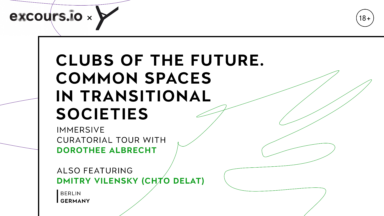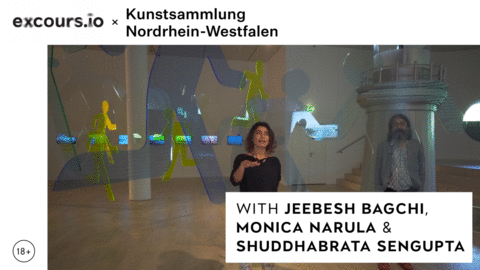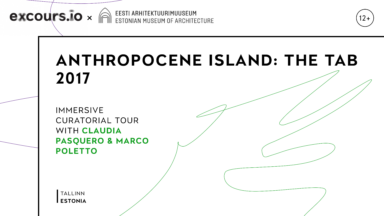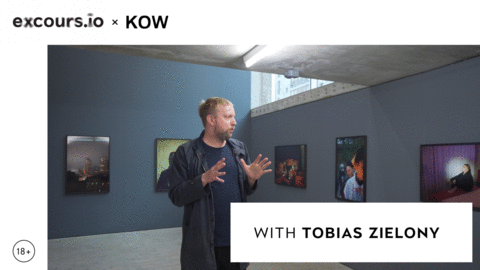CLUBS of the FUTURE. Common Spaces in Transitional Societies
Why should you watch this?
Notes from the Underground. Art and Alternative Music in Eastern Europe 1968-1994
The exhibition Notes from the Underground. Art and Alternative Music in Eastern Europe 1968–1994 examines the intersection of underground music and visual arts under communist regimes in Eastern Europe. It highlights how rock, punk, and new wave music, alongside performance art, fashion, and film, became tools of countercultural expression against state control. In response to censorship and scarcity, artists and musicians created homemade instruments, produced Samizdat magazines, and distributed recordings. The exhibition underscores the role of improvisation and irony in resisting authoritarianism, with works from Poland, Yugoslavia, the Soviet Union, and Czechoslovakia, offering a new perspective on how art and music intertwined as forms of dissent.
Why should you watch this?
In a time where freedom of expression remains a contested issue, Notes from the Underground. Art and Alternative Music in Eastern Europe 1968–1994 draws vital parallels between past and present struggles against authoritarianism. By showcasing how rock, punk, and new wave music intertwined with visual arts to resist state control, the exhibition highlights the subversive power of creativity. From DIY instruments to Samizdat magazines, it captures the spirit of rebellion and improvisation that thrived under repressive regimes, making it a timely exploration of art’s role in confronting oppression and fueling collective resistance.
Raqs Media Collective. Everything Else is Ordinary
Why should you watch this?
The Raqs Media Collective’s exploration of time as a force shaping human experience offers a profound critique of how society functions under capitalism. Their works challenge traditional notions of time, revealing its role in regulating life and framing historical narratives. By dismantling these fixed interpretations, they invite audiences to rethink the ways time is measured, experienced, and manipulated. In doing so, their practice merges art, history, and philosophy, making their work a compelling reflection on the rhythms that shape our individual and collective existence.
Anthropocene Island. The Tallinn Architecture Biennale 2017
The Tallinn Architecture Biennale (TAB) 2017delved into the future of urban environments through the lens of biotechnology and non-human-centered design. Curated by Prof. Claudia Pasquero, this fourth edition featured a diverse program comprising the Curatorial Exhibition, a thought-provoking symposium titled “Polycephalum City”, and the Tallinn Vision Competition, alongside satellite events like the Installation Programme exhibition and the bio.School showcase. Over two days, distinguished architects and researchers, including Mitchell Joachim and Rachel Armstrong, gathered to exchange insights on architecture’s intersection with biology and computation, envisioning cities as self-organizing systems. This Biennale not only highlighted innovative architectural practices but also prompted essential discussions on the evolving role of urban spaces in our rapidly changing world.
Why should you watch this?
In our current context, when climate change and urbanization demand urgent attention, it’s crucial to learn about the creative solutions sustainable architecture can provide. This exhibition serves as a vital platform to explore innovative solutions at the intersection of architecture, biology, and technology, emphasizing the importance of sustainable urban development. In today’s rapidly evolving society, where environmental crises impact our daily lives, understanding how cities can evolve into self-organizing entities is more relevant than ever. A guided tour illuminates the intricate relationships between human and non-human systems, fostering a deeper appreciation for how architecture can adapt to our ecological challenges. By engaging with expert interpretations, viewers can gain insight into the pressing issues of resilience, sustainability, and the ethical considerations of urban design, making this experience not only educational but transformative in our quest for a more sustainable future.
Tobias Zielony. Maskirovka [Concealment]
Why should you watch this?
Tobias Zielony’s “Maskirovka” is a compelling reflection on the resilience and creativity of Kyiv’s queer techno scene, resonating profoundly in today’s world marked by social and political upheaval. Set against the backdrop of the post-Maidan era, this exhibition underscores the ongoing struggle for identity and belonging in the face of repression and misinformation, themes that echo in various global contexts today. By employing the concept of “maskirovka”—a tactic of deception used in conflict—Zielony captures how both artists and activists navigate the complexities of expression and resistance. His photographs and dynamic animated film form a visual narrative that invites critical reflection on the intersection of culture, politics, and personal agency. As societies grapple with fragmentation and polarization, “Maskirovka” reminds us of the power of art to forge connections, challenge norms, and provoke dialogue, making it an essential commentary on contemporary struggles for freedom.





